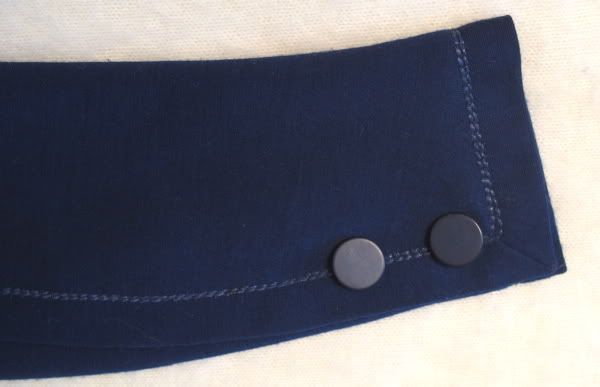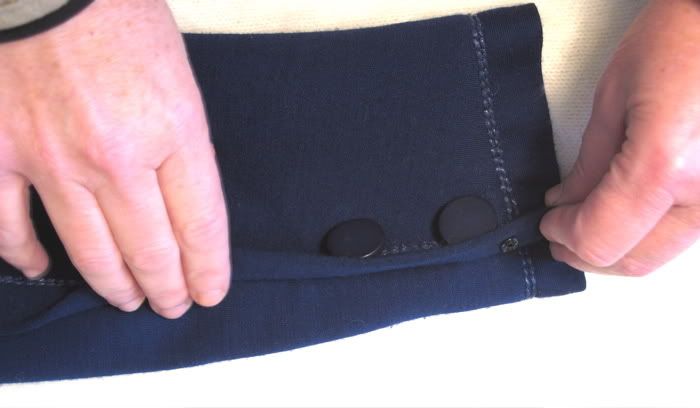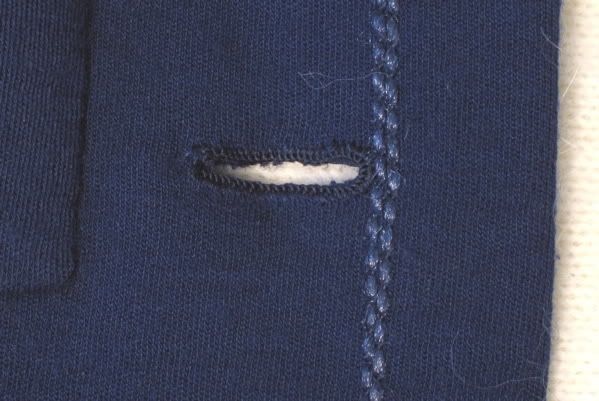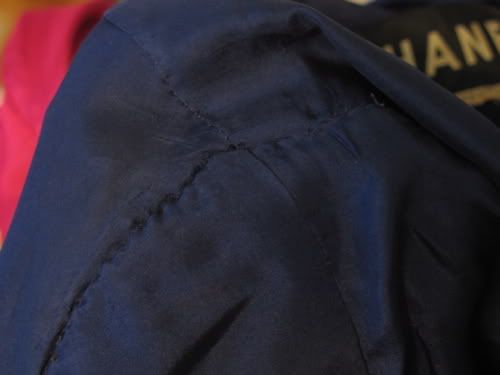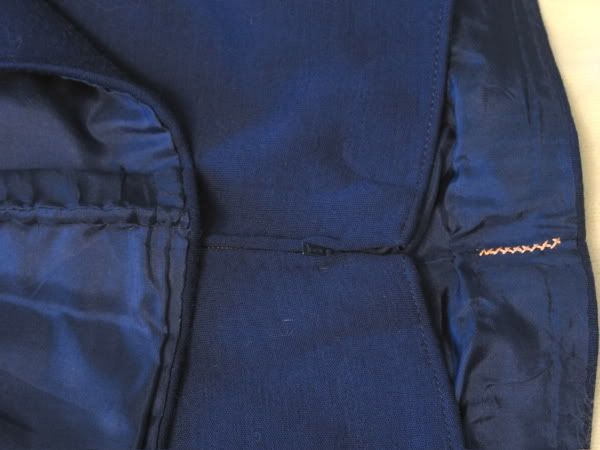claireshaeffer
VFG Member
I've purchased several Chanel suits during the last year and asked questions about many others. During the process, I've learned a variety of things which I wish to share with you just in case you are buying or selling.
1. The first thing I look at is the label. The label on a Chanel couture jacket says "CHANEL"--NOTHING else, no logo. If there is a logo, it is Boutique which is ready-to-wear. These suits are beautifully made, but they are not couture. Chanel Creations and Chanel Boutique are rtw (ready-to-wear) labels. Review the labels on this website for a refresher course.
I bought one jacket with a label that is not a Chanel. When I examined the label closely, I decided it was a fake; and the jacket is very badly made. The seller offered to refund my money. I declined because I can use it when teaching.
2. If there is no label, I look at the sleeves. If there is a vent at the wrist, a Chanel will have buttons and working buttonholes. They are usually thread and embroidered by hand with a buttonhole stitch. If you open the vent, the underside of the buttonhole is generally very unattractive.
3. Most jackets have hand buttonholes. Copies from the sixties usually have bound--two narrow strips of fabric at the opening.
4. Some jackets are quilted and some have a three piece sleeves. Most copies are not quilted and only a few have three-piece sleeves.
5. The lining should be sewn in by hand. Examine the lining at the armhole -- you can tell if it is machine stitched or hand-sewn.
6. Lots of copies have chains at the hem and Chanel buttons. Chains are easy to add and buttons can be fakes or taken from another suit.
I wrote an article in the Nov./Dec. issue of Piecework about a Chanel suit without a label at the Museum of the City of NY. There is additional information in the article which will help you when buying and selling.
Claire Shaeffer
1. The first thing I look at is the label. The label on a Chanel couture jacket says "CHANEL"--NOTHING else, no logo. If there is a logo, it is Boutique which is ready-to-wear. These suits are beautifully made, but they are not couture. Chanel Creations and Chanel Boutique are rtw (ready-to-wear) labels. Review the labels on this website for a refresher course.
I bought one jacket with a label that is not a Chanel. When I examined the label closely, I decided it was a fake; and the jacket is very badly made. The seller offered to refund my money. I declined because I can use it when teaching.
2. If there is no label, I look at the sleeves. If there is a vent at the wrist, a Chanel will have buttons and working buttonholes. They are usually thread and embroidered by hand with a buttonhole stitch. If you open the vent, the underside of the buttonhole is generally very unattractive.
3. Most jackets have hand buttonholes. Copies from the sixties usually have bound--two narrow strips of fabric at the opening.
4. Some jackets are quilted and some have a three piece sleeves. Most copies are not quilted and only a few have three-piece sleeves.
5. The lining should be sewn in by hand. Examine the lining at the armhole -- you can tell if it is machine stitched or hand-sewn.
6. Lots of copies have chains at the hem and Chanel buttons. Chains are easy to add and buttons can be fakes or taken from another suit.
I wrote an article in the Nov./Dec. issue of Piecework about a Chanel suit without a label at the Museum of the City of NY. There is additional information in the article which will help you when buying and selling.
Claire Shaeffer
